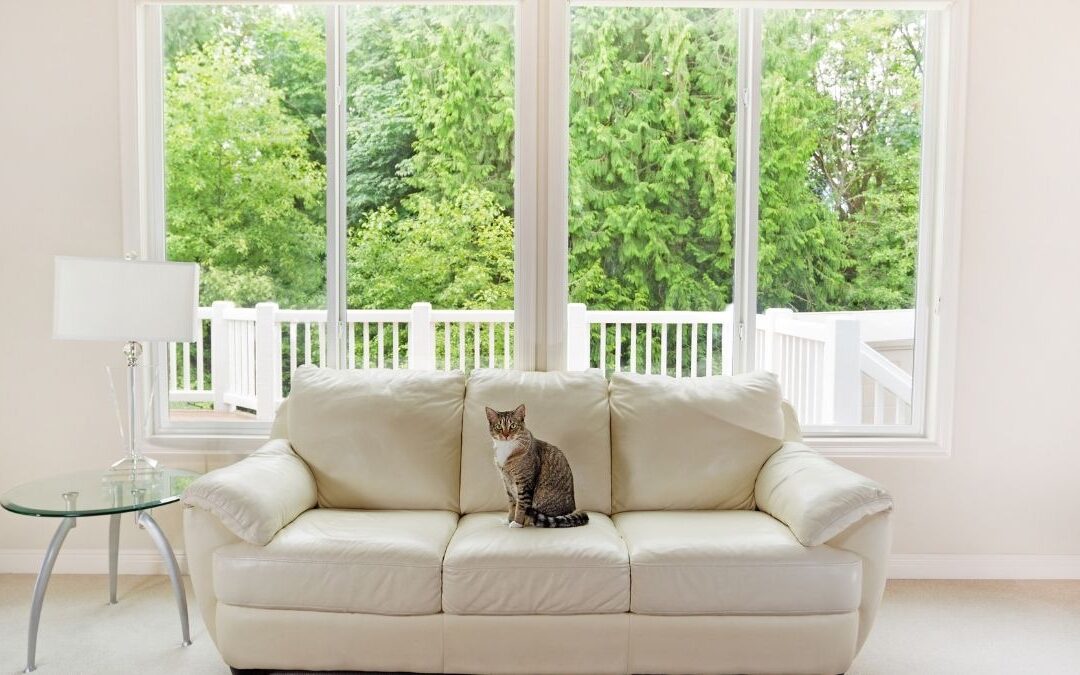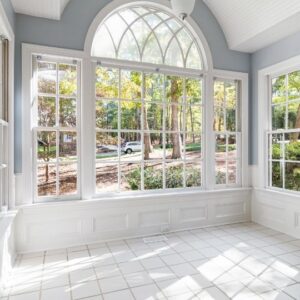We’ve written in the past about how there’s really no such thing as a “standard” window size. However, there are several common window sizes. Knowing what these sizes are can help you estimate your needs and budget when either replacing existing windows or building a new home. Let’s take a look at these common sizes and why you might want to use those sizes when building a new home or remodeling your current one.
What is a Standard Window Size?
Most single and double-hung windows in homes range in width from 24 to 30 inches and in height from 48 to 56 inches. Most building codes have minimum window requirements for habitable rooms:
- 20-inch width
- 24-inch height
- 44-inch maximum is the standard window height from the floor.
These codes are in place to ensure that you can get out of your home via a window in the event of a fire or other emergency and to protect people from getting cut. If you plan on creating a fully finished basement with a bedroom in it, you’ll definitely need to pay attention to the codes related to egress windows. The standard bedroom window size must be large enough that someone can get out of it if needed, and that can be difficult to achieve in some basements.
Other codes you may be required to meet include safety glass installation for sliding doors, sidelights, windows near doors, and glass that’s less than a minimum distance from the floor.
Note that single-hung or sash windows and double-hung windows are the same as far as size and looks go. The difference is that with single-hung windows, only the bottom part of the window opens. With double-hung windows, you can open both the top and the bottom sections. Single-hung windows are the more common option, while double-hung windows are considered more modern. They’re also easier to clean but can be more expensive.
Measuring Windows
So, what is a “common” size window? It depends on several factors:
- The window’s rough opening. This is the measurement from the inside of one side of the frame to the inside of the other side. If you want to calculate this measurement yourself, measure the top, middle, and bottom of the window horizontally and then do it again vertically to determine if your window is a standard window height.
- The half-inch rule. Once you calculate the rough opening, take a half-inch off each measurement to allow for the installation of flashing.
- Standard double-hung window sizes. One of the most common window types, these windows come in 24, 28, 32, and 40-inch sizes. Heights include 36, 44, 52, 54, 62, and 72 inches. Don’t forget to take a half-inch off of each measurement.
- Sliding windows. Horizontal options include 36, 48, 60, 72, and 84 inches, and vertical possibilities are 24, 36, 48, and 60 inches. These windows are essentially a smaller version of a sliding patio door and operate the same way.
Be sure you know how to measure for replacement windows. If you don’t, you may make some of these common mistakes:
- If you measure only the glass size from the interior of the trim or the sash stops, the window you purchase will be too small. Standard window dimensions include the frame.
- Always do your measurements from inside your house.
- Employ the old saying of “measure twice, cut once.” You need accurate measurements to ensure that you have the correct size windows. Double-check to be sure the numbers you have are accurate.
- Measuring should be the first step in replacing your windows. Don’t remove the old windows or pick out the style you want until you know what size you need.
For calculation and budgets purposes, keep in mind that window measurements are first given in width then height. And even though window sizes differ, the measuring technique is the same for all of them.
Common Sizes for Other Types of Windows
The above sizes are common for standard double-hung and sliding windows, but you may have other types of windows in your home. If you have a bay window, your width is likely to range between 42 and 126 inches for the large glass pane. It can range in height from 36 to 78 inches. The side windows may not be a standard size since they are typically very narrow. You may have to have those windows custom-made.
For those with large picture windows, expect a width of between 24 and 96 inches. The height for these windows is usually between 12 and 96 inches.
Casement windows are ideal for those looking for indoor/outdoor living or who want to let in a warm summer breeze. The standard window width for casement windows can be anywhere from 14 to 35.5 inches, while the height is between 29.5 and 77.5 inches.
Awning windows are hinged and open like doors instead of sliding upwards like other windows. They offer a nice view when opened or closed. Those that are hinged on top can be opened even when it’s raining since the opening will be on the bottom. They are typically between 24 and 46 inches wide and between 20 and 92 inches tall.
Also, keep in mind that just because you have an oddly shaped window doesn’t mean it’s not a common size. This is especially true if you live in an area where architectural styles included circular windows. Do some research—you may find that your round window is actually a common size, so you can avoid having a custom window created.
Why Use Common Window Sizes?
If you’re building a home or renovating your existing one, you may be tempted to put in some uniquely shaped and sized windows just to make your home stand out. However, there are a few reasons why using common window sizes is a better idea, at least for the majority of your windows.
First, common window sizes are more affordable. If you have a uniquely shaped window, the framing and the glass will have to be built specifically for that space. You won’t be able to simply order a standard window. This is going to greatly increase your costs.
Second, unique windows take time. The framing has to be built and the glass has to be cut for the exact shape and size. This can take weeks, especially if the window manufacturer isn’t local. If there are delays in manufacturing these windows, it can put everything behind schedule.
Third, you have to be very accurate with your measurements. If your custom window is even just a little off, you may have to have another made. If the mistake in the measurement was on your end, you won’t get a refund for the first one, either. Any mistake here can be very costly.
That’s not to say you should avoid unique windows or have them removed when you remodel. However, limit yourself to one or two, and be very certain you have the measurements correct. Too many uncommonly shaped windows will run up your budget and potentially put your home build behind schedule.
Simonton Windows
Now that you have an answer to the question of “what is a standard window size,” it’s time to look at your window options. You want windows that protect your home from the elements, reduce your energy cost, and look great. Every Simonton new construction or replacement standard window size is known for its energy-efficiency, beautiful hardware choices, and advanced glass options for increased sound dampening and security. These Simonton replacement windows are beautiful and durable, plus they come with a lifetime warranty.
Depending on the age and style of your home, and whether you’re looking for new construction or replacement windows, D&D Glassworks can help you get the right fit Simonton windows for your Sonoma County home’s needs. We’re proud to be the area’s top supplier of Simonton windows and doors. There’s no need to search for “window replacement near me” or even “Simonton windows dealers near me.” Just give us a call. To learn more about common windows or to schedule a consultation, contact us online today or call us at 707.536.9183 for a free estimate.




